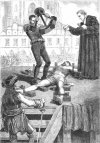K
ker lee
Guest
This is great! Will you do more after she is broken and tied on the wheel?Hello to everyone who is not indifferent to this method of execution. I think it's time to liven up this thread a bit and contribute to it )
View attachment 1094064







